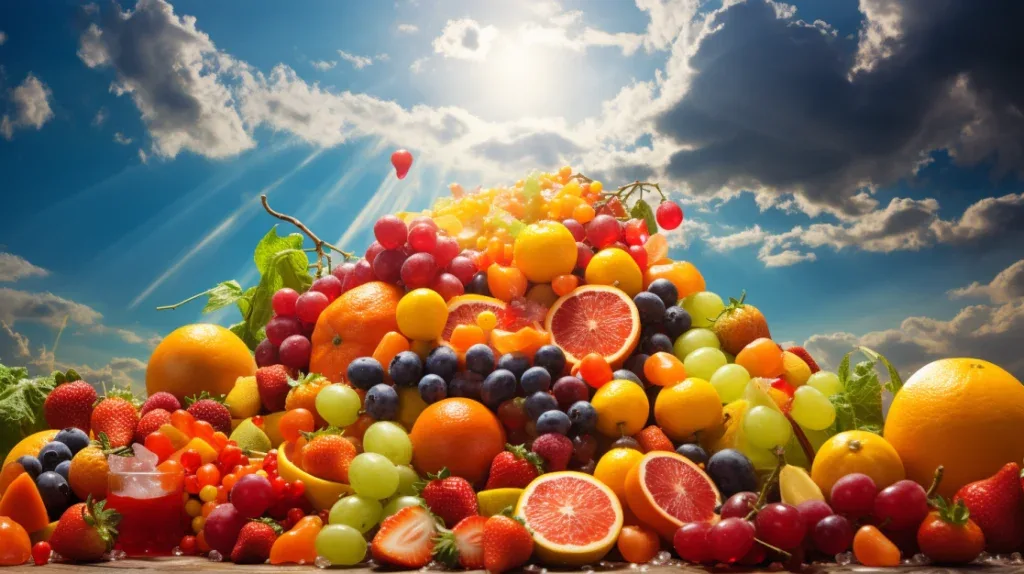Table of Contents
An apple a day keeps the doctor away.’ This adage has long been a reminder of the importance of making healthy choices regarding our diet. But what about those tempting treats that can be hard to resist? Skittles, the colorful and flavorful candy that has delighted taste buds for decades, is at the center of a controversy in California. In an unexpected move, the state has banned Skittles, citing health concerns and environmental implications.
This article delves into the unexpected truth behind the candy controversy, exploring the history of Skittles in California, skittles banned in california, and the responses from Skittles and its parent company. We will also examine the public perception, consumer reactions, and the effects on the candy industry.
Join us as we uncover the facts and implications surrounding the ban on Skittles and revisit its legacy today.
Key Takeaways
- Skittles were banned in California due to health concerns and environmental implications, such as high sugar content, artificial ingredients, and lack of nutritional value.
- The ban has economically affected the candy industry, causing declining sales and revenue.
- The ban has prompted discussions about the role of sugary treats in society and the future of confectionery products.
- The ban allows consumers to explore healthier and more environmentally friendly candy options and for companies to adopt sustainable practices.
What Is Skittles?
Skittles is a popular candy known for its fruity flavors and vibrant colors. However, California recently decided to ban Skittles due to concerns over its ingredients. The unexpected truth behind the candy controversy lies in using vegetable oil, toxic chemicals, and dangerous additives.
California’s ban stems from a specific additive called propylparaben, commonly used as a preservative in food products. While the FDA permits the use of propylparaben, there are growing concerns about its impact on public health. Ongoing evaluations have revealed that propyl paraben can disrupt hormone function and potentially lead to reproductive issues.
The ban on Skittles and other candies containing propyl paraben highlights the need for more comprehensive food safety measures and federal oversight in distributing foods containing potentially harmful additives. California, known for its commitment to public health, is proactively protecting its residents.
While Skittles fans in California may be disappointed, this move exemplifies the state’s dedication to ensuring the safety of its food supply. Other confectionery companies may also face scrutiny in the future as the state continues to prioritize the well-being of its residents.
The History of Skittles in California
Skittles, the popular candy known for its colorful and fruity flavors, has faced controversy in California. In 2013, the state banned Skittles due to concerns over its use of a food additive called propylparaben. This additive, commonly used as a preservative in food products, raised health risks as studies suggested it may disrupt hormone function.
The ban resulted from ongoing evaluations by the Environmental Working Group, a nonprofit organization dedicated to public health. Their research found that Skittles and other confectionery companies used propyl paraben in their products, presenting a potential risk to consumers.
California, known for its comprehensive food safety regulations, protected its residents. The ban on Skittles and other food products containing propyl paraben aimed to ensure the public’s health and well-being.
This decision highlighted the importance of federal oversight in monitoring additives in the food industry. It also spurred discussions around the potential dangers of toxic chemicals and additives in our food supply. Through ongoing scrutiny and regulation, California strives to maintain a safe and healthy environment for its residents.
While Skittles may no longer be available in California, it remains popular in other parts of the country. Consumers continue to enjoy the rainbow of flavors embodied by this beloved candy.
Why Was Skittles Banned in California?
Skittles and other candies were banned in California due to propyl paraben, a commonly used preservative. While the FDA permits its use, concerns about its impact on public health have emerged. Ongoing evaluations have revealed that propyl paraben can disrupt hormone function and potentially lead to reproductive issues.
This ban highlights the need for more comprehensive food safety measures and federal oversight in distributing foods containing potentially harmful additives. California, known for its commitment to public health, is proactively protecting its residents. The decision to ban Skittles and similar products underscores the state’s dedication to ensuring a safe and healthy food supply for its citizens.
Background
In recent years, the state of California has implemented a ban on the popular candy Skittles. This unexpected decision has sparked controversy and raised questions among consumers. The truth behind the prohibition lies in concerns over the use of toxic chemicals and dangerous additives in candy. Skittles contains vegetable oil, which has been found to have health risks when consumed in large quantities. Additionally, the candy has been found to contain propylparaben, a food additive that has been linked to hormone disruption.
The ban aims to protect public health and ensure comprehensive food safety within the state. The move comes as part of ongoing evaluations of food products and the need for federal oversight in the food industry. The ban applies to all distribution of Skittles in California, including popular candy shelves in neighborhood grocery stores. This decision aligns with California’s commitment to prioritize the health of its residents and maintain a safe food supply.
Health Concerns Surrounding Skittles

The health risks associated with Skittles have led to the banning of popular candy in California. The unexpected truth behind this candy controversy is that Skittles contain toxic chemicals and dangerous additives. One major concern is using vegetable oil in Skittles, which can harm human health. Additionally, Skittles have propylparaben, a food additive linked to hormone disruption and potential public health risks.
The ban on Skittles in California is part of a comprehensive food safety initiative aimed at protecting the food supply and ensuring the well-being of consumers. Ongoing evaluations by government authorities and public health organizations are critical for identifying and addressing potential health risks posed by food products. The food industry needs to prioritize the safety and quality of its derivatives and for consumers to be informed and cautious about the potential risks associated with the foods they consume.
Responses from Skittles and Parent Company
You might be surprised to learn about Skittles and its parent company’s response regarding the California ban.
In light of the Skittles controversy, the parent company, Mars, Inc., has released a statement expressing their disappointment with the ban. They argue that Skittles are a beloved candy enjoyed by millions of consumers worldwide, and the ban is an overreach that unfairly targets their product.
Mars, Inc. emphasizes its commitment to safety and compliance with all relevant regulations. They assert that Skittles has undergone rigorous testing and meet all necessary health and safety standards. Additionally, they highlight their efforts to provide clear labeling and educate consumers about responsible consumption.
Despite the industry response, public perception and consumer reactions to the ban remain divided.
How Did the Public React to the Ban?
The ban on Skittles in California sparked mixed reactions from the public. Some people expressed concerns about the potential health risks associated with the candy’s use of toxic chemicals and dangerous additives. They supported the ban as a necessary measure to protect public health and ensure food safety. Others criticized the ban, arguing that it was an overreach of government regulation and an infringement on personal choice.
The ban also brought attention to the larger issue of comprehensive food safety and the need for stricter regulations in the food industry. Many consumers called for increased transparency and more stringent oversight to prevent the distribution of foods containing harmful additives.
Overall, the public reaction to the Skittles ban highlighted the importance of public health in the food supply chain and the ongoing efforts to create a safer and more transparent food industry.
Transitioning into the subsequent section about ‘the effects on the candy industry,’ the Skittles controversy has undoubtedly sparked a larger debate about the future of confectionery products.
Effects on the Candy Industry

Prepare to be amazed by the far-reaching impact of the Skittles controversy on the candy industry. It has left manufacturers scrambling to adapt to changing consumer preferences and demands. The ban on Skittles in California has had significant economic consequences for the candy industry. With Skittles being one of the most popular candies, its absence from store shelves has resulted in declining sales and revenue for manufacturers.
As a result, candy companies are now exploring alternative options to meet the demands of consumers looking for healthier and more environmentally friendly candy choices. The Skittles ban has served as a wake-up call for the candy industry, forcing them to reevaluate their products and make necessary changes.
As we delve into the next section about ‘health and environmental implications,’ the full extent of the impact will become even clearer.
Health and Environmental Implications
There are potential health benefits when considering the health and environmental implications of the ban on candy like Skittles. Removing these sugary treats from the market could reduce the consumption of empty calories and added sugars, which can contribute to obesity and other health issues.
Additionally, the ban could positively impact the environment by reducing the production and waste associated with candy packaging. These potential health and environmental benefits from the prohibition on Skittles highlight the importance of considering the broader implications of food products and provide valuable lessons for other similar products.
Potential Health Benefits of the Ban
One theory suggests that the ban on Skittles in California could have surprising health benefits.
- Potential Economic Impact: The ban on Skittles could boost the economy by promoting the sales of alternative candy options. With Skittles off the shelves, consumers may turn to healthier candy choices, increasing sales for companies producing these alternatives. This could result in job creation and a positive economic impact on the state.
- Alternative Candy Options: The ban on Skittles allows consumers to explore healthier candy options. Companies may introduce new candies made with natural ingredients and less sugar, appealing to health-conscious individuals. This could improve overall health and well-being among Californians as they make more informed choices about their candy consumption.
The ban on Skittles has the potential for a positive economic impact and encourages healthier candy options, contributing to a reduction in environmental impact.
Reduction in Environmental Impact
Choose healthier candy options to reduce the environmental impact caused by candy production and packaging. By making this choice, you can contribute to reducing waste and promoting sustainable practices.
One way to achieve this is by selecting candies that come in reusable packaging. This means that instead of producing single-use wrappers in landfills, you can opt for sweets in containers that can be reused or recycled.
Additionally, some candy companies are adopting sustainable practices in their production processes, such as using renewable energy sources and minimizing water consumption. By supporting these companies, you can encourage adopting environmentally friendly practices throughout the candy industry.
Considering these options will benefit your health and contribute to a greener future.
Lessons Learned for Other Food Products
To savor the sweet taste of progress, let your appetite for change inspire other food industries to learn from the candy industry’s eco-friendly innovations. The reduction in environmental impact achieved by California’s ban on Skittles offers valuable lessons for different food products.
By prioritizing food safety and responding to consumer activism, the candy industry has shown that it’s possible to make significant changes that benefit both the environment and consumers. This ban has highlighted the importance of using sustainable ingredients, reducing packaging waste, and implementing responsible manufacturing processes.
These eco-friendly innovations safeguard consumers’ well-being and demonstrate the industry’s commitment to a more sustainable future. By embracing these lessons, other food industries can follow in the footsteps of the candy industry and contribute to a healthier planet.
In the subsequent section about ‘revisiting the Skittles ban today,’ it’s essential to evaluate the long-term impact and potential advancements in eco-friendly practices.
Revisiting the Skittles Ban Today

The current status and enforcement of the Skittles ban in California is still in effect, with the state continuing to prohibit the sale and distribution of candy due to health and environmental concerns.
The ban has sparked continued debates and discussions among experts, consumers, and policymakers regarding the potential risks and benefits of consuming Skittles.
Looking to the future, the outlook for Skittles remains uncertain as the candy industry faces increasing pressure to address environmental sustainability and public health issues.
Current Status and Enforcement
Although some may argue that the ban on Skittles in California is futile, the current enforcement of the law remains strict and unwavering.
The state authorities have prioritized ensuring that Skittles are not being sold or distributed within California’s borders. They have increased surveillance and implemented strict penalties for those violating the ban.
As a result, the impact on Skittles sales has been significant, with a sharp decline in the number of Skittles sold in the state.
However, there are continued debates and discussions surrounding the ban’s effectiveness and impact on consumer freedom. Despite the ongoing talks, the ban on Skittles in California remains in place, and the state continues to enforce it diligently.
Continued Debates and Discussions
You can’t deny that the ongoing debates and discussions about the ban on Skittles in California have sparked passionate arguments on both sides.
Supporters of the ban argue that protecting public health is necessary, pointing to the high sugar content and potential negative health effects of consuming Skittles.
On the other hand, opponents of the ban believe it’s an infringement on personal freedom and argue that consumers should have the right to make their own choices regarding what they eat.
These debates have led to a wide range of consumer opinions, with some calling for stricter regulations on sugary snacks while others defend their right to enjoy Skittles without interference.
As the discussions continue, it remains to be seen what the future outlook for Skittles in California will be.
Future Outlook for Skittles
Imagine a world where your favorite colorful candies are no longer a part of your life, leaving a void that cannot be filled. The future outlook for Skittles is still being determined, as the ban in California has raised concerns about the coming market and industry growth. Skittles, known for its vibrant colors and fruity flavors, has been a staple in the candy industry for years. However, with the ban, Skittles may need help maintaining its market share and to expand its reach.
The candy industry is constantly evolving, with new trends and flavors emerging. With the ability to sell in California, Skittles may be able to adapt to changing consumer preferences and compete with other brands. It remains to be seen what impact the ban will have on the future of Skittles. Transitioning into the subsequent section about ‘conclusion: the legacy of the Skittles ban,’ it is clear that the ban has left a lasting impact on both the candy industry and consumers.
Frequently Asked Questions
What is the history of Skittles in California?
Skittles have a rich history in California. They burst onto the scene in the 1980s and quickly gained popularity. Their colorful and fruity flavors captivated the taste buds of Californians, making them a beloved treat.
What are the health concerns surrounding Skittles?
The health concerns surrounding Skittles include their high sugar content and artificial ingredients. These factors may contribute to negative health outcomes such as obesity, tooth decay, and an increased risk of diabetes and heart disease.
Why was Skittles banned in California?
The Skittles ban in California caused a huge controversy and significantly impacted the candy industry. Understanding why the ban occurred and the unexpected truth behind the candy controversy is important.
How did Skittles and its parent company respond to the ban?
Skittles and its parent company responded to the ban by taking legal action. They challenged the ban in court, arguing that it was unjustified and lacked scientific evidence to support the claims against their candy.
What were the public perception and consumer reactions to the Skittles ban?
Public perception and consumer reactions to the Skittles ban varied. Some supported the decision, believing it protected public health, while others were disappointed, feeling it infringed on personal choice. Sales were affected, but it’s unclear if this was solely due to the ban.
Conclusion
As you reflect on the unexpected truth behind the Skittles ban in California, it’s clear that health concerns played a significant role in the decision. The coincidence of rising childhood obesity rates and the excessive sugar content in Skittles cannot be ignored.
While the ban may have caused uproar in the candy industry, it ultimately served as a wake-up call for consumers and manufacturers. It’s crucial to prioritize our health and the environment, making more informed choices about the products we consume.


